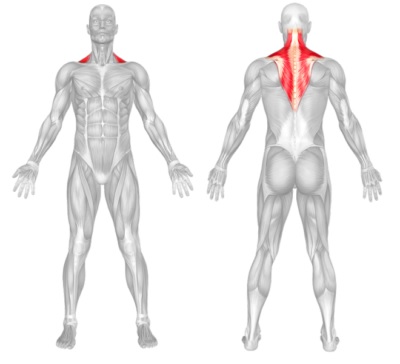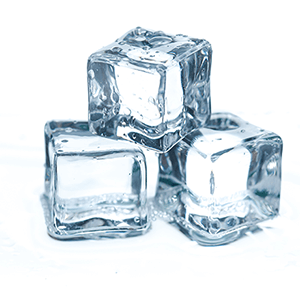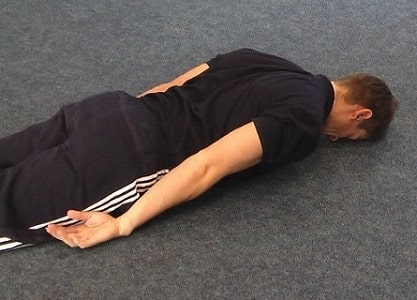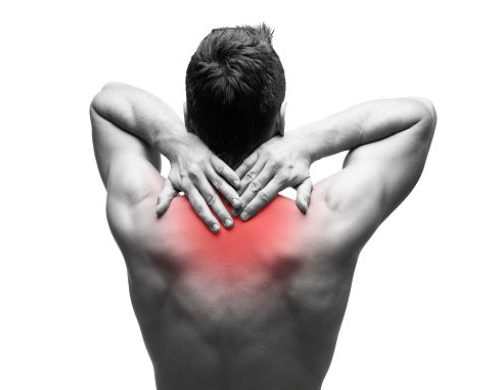Muscle overuse and misuse can sometimes lead to major health problems, such as Trapezius strain, and this stress varies between mild or severe cases, depending on what is the cause and location of the Trapezius injury in the body.
The trapezius muscle or the muscle of the traps, which is the commonly used name for it, is a major upside-down triangular muscle located in the upper part of the back of the body, covering most of the middle of the shoulders and extending in the middle of the back (in the shape of the letter T), and it is responsible for many basic actions, such as securing proper upper body posture alignment, as well as the many activities in your life, such as lifting objects.
Most bodybuilders focus on the growth of the traps area, because they provide the strength and shape of the muscles of the body that they want to achieve, and they also provide an essential role in increasing the force of the pulling exercises.
Plus, once these muscles are developed, they provide great shape and body physics so that the thicker mass builds up in the back muscles with a wider measurement.
But to reach this level of strength, you are likely to face many obstacles of lifting more heavy weights or making a wrong movement during the exercise journey, which increases the possibility of many injuries in this area and causes muscle strain.

What is a Trapezius Strain?
It is a common problem behind the upper back that reduces movement in your arms and shoulders. Traps strain usually occurs when muscles, tendons or fibers stretch beyond their normal limits, either due to excessive load activity or tightness.
In this article, I will outline the symptoms of traps strain, so that you can know whether you have symptoms of injury or were not aware of them, and I will discuss the causes that will lead to muscle fatigue, in order to try to avoid them as much as possible.
We will also cover different treatment methods in a quick way which we can do ourselves at home and does not need extra medical attention and then finally we will cover more about exercises and stretches that will prevent us from getting such injuries.
Symptoms of Trapezius Strain
The symptoms of a trapezius strain can range from a slight feeling of pain to a feeling of critical one that reaches up to a tendon or muscle tear, and depends mainly on the cause of the injury and its level of severity.
You may feel burning and muscle spasms, or dots and lines of pain in the upper back and in the neck. In advanced cases, it may cause inflammation and swelling of the muscles.
It can cause tension in the shoulder and neck which reduces their range of motion, and this will cause another problem when turning your head to the sides.
Moreover, you may feel numbness few times in the arms area.
Causes of Trapezius Strain
The causes of Trap stain is usually caused by muscle overuse or severe injury. Let’s review a number of the main or common causes:
Severe Injury
This happens when a muscle is hit or impinged suddenly, such as a severe impact with a fall or hard landing of the body on an object, and this will cause a direct bruise in the area as well as immediate stiffness and pain.
Overuse
Overuse injury increases based on two factors, either frequently or performing activities over an extended period of time. These activities can either be low-impact activities such as improperly common sitting or prolonged use of a mobile phone with a low head.
Moreover, another powerful effect is like lifting heavy weights while doing bodybuilding.
When the trapezius is repeatedly subjected to stress for a long period of time, without taking a break or proper care, it will become affected and cause the muscles of the traps to strain.
Treatment of Trapezius Strain
Treatment options for trap muscle strain may vary depending on the level of injury, and you also need to differentiate between cases that need medical attention or not, if you are not sure, the best thing to do is to see the nearest physical consultant for examination and evaluation until you are sure that the condition is not serious issue.
But most cases can be recognized if you have a low tolerant pain up to moderate level, does not limit the range of motion of the arms, head and shoulder, and are still able to turn your neck to the sides, which means that your condition can often be treated at home, without further concern or consult a consultant.
The different possible treatment options for the trap strain could be as follows:
Rest
Most common low-impact conditions are treated by taking a break, because they get overloaded or a slight wrong movement during the activity, which requires getting enough rest to recover, and recharging the muscles with the energy needed to rehabilitate themselves by taking care of them. Treatment for this type of injury can certainly be obtained at home, or wherever place you feel relaxed and refreshed.
Ice
Another treatment method that can be applied, by adding ice to the areas that feel cramping, burning or swollen, and preferably wrapping the ice with a low-thickness towel, so that the skin is not directly exposed to a severe drop in temperature, which may negatively affect your body. This way the ice will absorb muscle tension.

Wrap Infected Area
In other cases, wrapping the strain by covering the area between your shoulder and the middle of your back is preferable to provide adequate pressure on the trapezius muscle to reduce swelling, but this is not entirely practical, as the area in the middle of the back is difficult to cover.
However, there is another new alternative way to do this, through using Kinesiology tape which is a specialized elastic tape for rehabilitation and prevention of muscle injuries, applied to the skin, and sometimes used by athletes and in the sports field to avoid and restore muscle sprains.

Surgery
A last treatment option If a severe strain injury results from a complete rupture of a tendon or muscle, medical attention may be required, with surgery to restore the muscle and repair the rupture or reattach the tendon.
Recovery Period from Strain Traps
Recovery time depends on the level of injury strain and the rehabilitation treatment applied to restore normal muscle function and return to normal motion, for low impact injury, while using rest and ice, recovery may take about two weeks, but for more serious injuries may extend for a few months.
If engaging in medical treatment, your doctor will advise you to follow a plan with light recovery traps activities, and gradually add certain exercises or stretches over time to the program, in order to increase flexibility and muscle strength, helping your body return to a normal state.
Stretches Traps
Performing stretching movements is of great benefit because it avoids injuries to the trapezius muscle and muscle strain.
You can start with one of the easy traps stretches, by placing your head straight, with your shoulders relaxed, then bending your head to the left side, like your trying to touch your left shoulder with your left ear, and then freezing in this position for 20 seconds, then return your head directly to the middle, then switch head by turning to the other side to the right and repeat the same steps.
Another simple exercise that can strengthen the trapezius, is called the scapula setting.
Begin by lying on your stomach, with your face down on the floor (you can add an optional a towel or pillow in front of your forehead, for your comfort), keeping your entire body straight, with your arms aligned and parallel to your torso, now lift both your shoulders together, and contract the two traps in the middle of your back.

You can check out this link for Additional Trapezius Stretches if you are interested in maintaining muscle flexibility and as a warmup.
Exercises Traps
If you want to increase the strength of your traps, while your traps do not sustain injuries, you need to follow regular workouts to prevent future injuries.
The Workouts that can be suitable for men like Waiters Walk, Kettlebell walking or reverse flying with dumbbells can have great benefits, for women other exercises that can be practiced such as the seated dumbbell press or superwomen exercise that will also strengthen the traps muscles and improve your posture, and add stability the rotating shoulders with the neck, with the overall balance of the upper body.
I want to emphasize, to make sure you warm up your muscles for a while before starting your workout, to reduce any potential injury or muscle strain.
Conclusion
One of the most important factors to prevent trapezius strain injury is engaging in stretching and exercises in your daily routine activities, either for 10-15 minute stretches in the morning, before exercising, be careful when lifting object heavy or weights and make sure it suitable and doesn’t hurt you.
Stretching helps you loosen tight muscles to ensure flexibility when needed.
Always follow up and monitor your Symptoms, cause any problem in the body, starting with a simple signal, the body raises this signal to tell you to be careful and start treating yourself, ignoring these symptoms will build up issues to a severe level over time, this is something you don’t want to happen !
Do not ignore resting the muscles of your body, as overloaded efforts without breaks will only make things worse after a while, so stop such behavior and be more careful and attention to your health.
If you are interested, you can boost your shoulder stretches which associated with the traps, to increase flexibility and improve recovery in this area.

